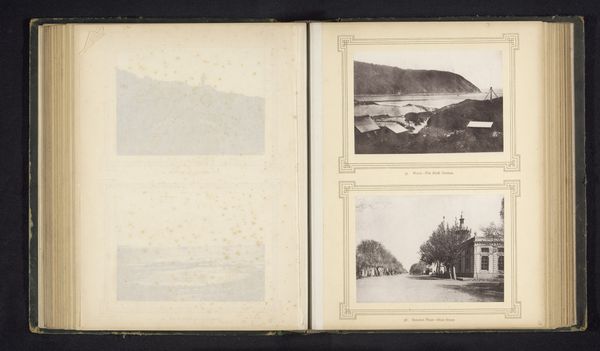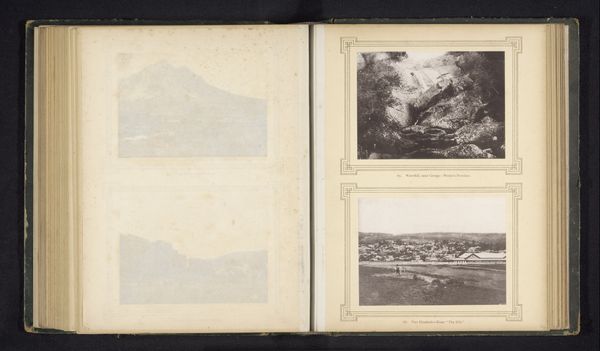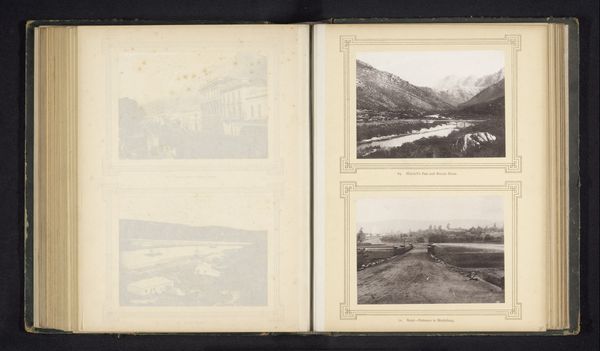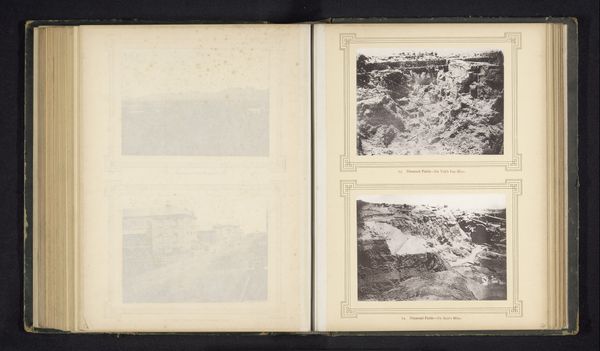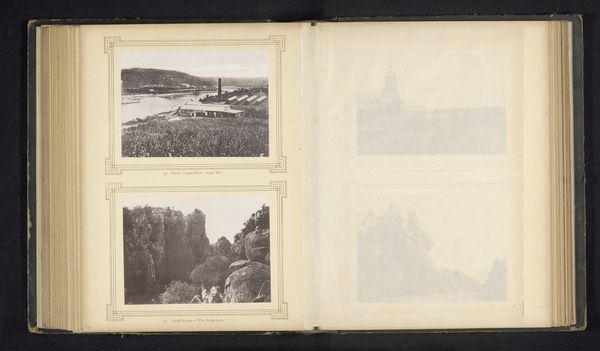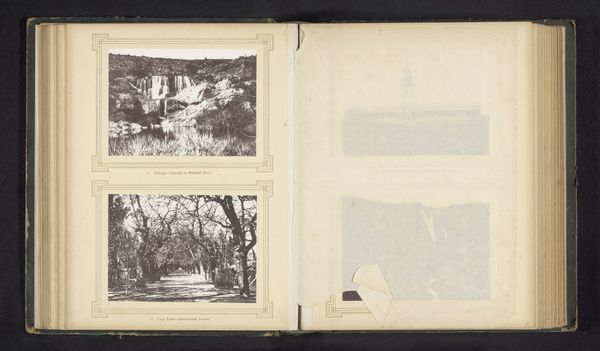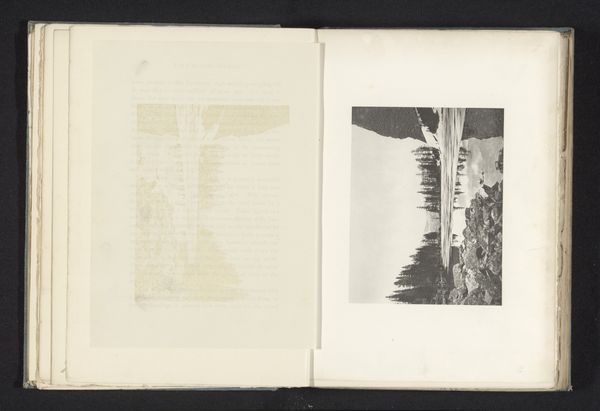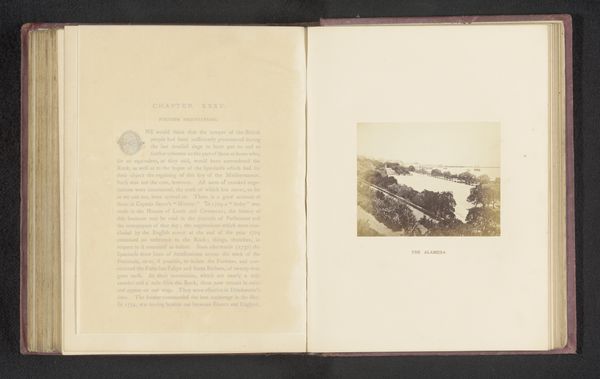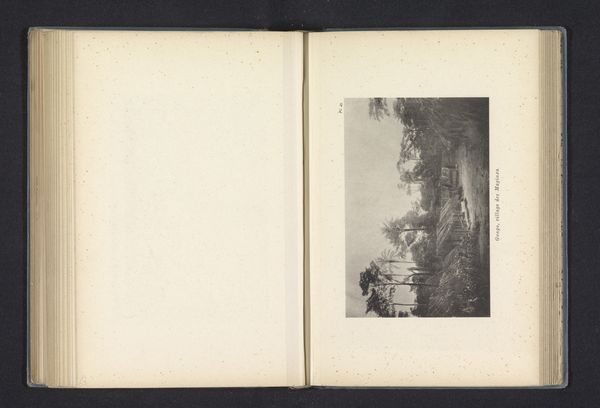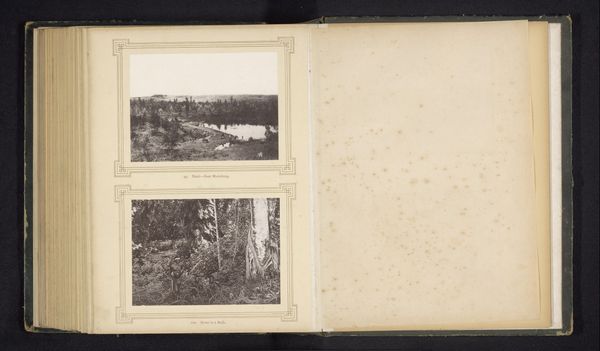![['Transvaal gold fields-waterfall, "Mac Mac"', 'Grahams Town-High Street'] by Sam Alexander](/_next/image?url=https%3A%2F%2Fd2w8kbdekdi1gv.cloudfront.net%2FeyJidWNrZXQiOiAiYXJ0ZXJhLWltYWdlcy1idWNrZXQiLCAia2V5IjogImFydHdvcmtzLzc1MmEzMmM2LWFhMTktNDRhNy04NTUyLWU2ZTI0Y2JmZjRmOS83NTJhMzJjNi1hYTE5LTQ0YTctODU1Mi1lNmUyNGNiZmY0ZjlfZnVsbC5qcGciLCAiZWRpdHMiOiB7InJlc2l6ZSI6IHsid2lkdGgiOiAxOTIwLCAiaGVpZ2h0IjogMTkyMCwgImZpdCI6ICJpbnNpZGUifX19&w=3840&q=75)
['Transvaal gold fields-waterfall, "Mac Mac"', 'Grahams Town-High Street'] before 1880
0:00
0:00
print, photography, albumen-print
# print
#
landscape
#
waterfall
#
photography
#
cityscape
#
street
#
watercolor
#
albumen-print
Dimensions: height 290 mm, width 219 mm
Copyright: Rijks Museum: Open Domain
Curator: What strikes you first about this spread from a late 19th-century photograph album featuring albumen prints of South Africa? The titles indicate that they show “Transvaal gold fields-waterfall, ‘Mac Mac’” and "Grahams Town-High Street". Editor: Well, besides the strong sepia tones typical of albumen prints, I am immediately drawn to the contrast. The upper image, "Mac Mac" falls, has such raw, almost untamed natural power, a spectacle almost untouched, and the lower image captures the crisp, orderly lines of the High Street, the bustle of nascent civilization making its mark on the landscape. It feels intentional, the juxtaposition. Curator: Exactly. And that juxtaposition speaks volumes about the moment in history when these photos were taken and consumed. The albumen print process itself involved significant labour. Think about the processing and its heavy reliance on readily available material for photographic production at the time— primarily egg whites, for paper coating. We often overlook how much work and resources were required. Editor: I see your point. There's an intense interplay here, where the extraction of gold in Transvaal is intrinsically tied to this seemingly picturesque vista and orderly street view in Grahams Town. The images function as promotional material. We need to view these in terms of colonial projects—commodification of labor, of raw resources, and also marketing towards settlement in Grahams Town as signs of advancement. It’s a potent visualization of colonial ambitions at that moment. Curator: Precisely. By focusing on these images as objects circulating within networks of power, we can begin to see how they reinforce the ideals of progress, whilst quietly erasing the harsh realities experienced by labourers working in the gold mines and the disruptive impact on existing social structures. The circulation of photographs allowed viewers both local and international to reinforce these ideals in society and art. Editor: Considering the mass of imagery available today, something about viewing the composition as an artifact -- the tangible and the embedded social meaning of the objects feels ever so poignant.
Comments
No comments
Be the first to comment and join the conversation on the ultimate creative platform.
